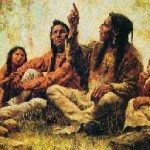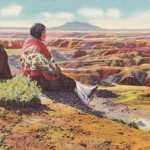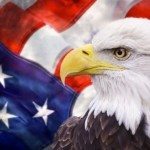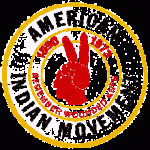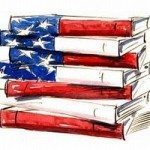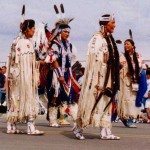“Treatment of Native American And Funeral Objects In The United States”
Marie Samuel, Vice President
Yachay Wasi – NGO/DPI, NYC – Cuzco, Peru
(Member of the NGO Committee on the UN International Decade of the World’s Indigenous Peoples.)
Sunday, January 24, 1999
(The following is a statement prepared for presentation at World Archaeological Congress 4 in Cape Town, South Africa January 10-14, 1999.)
THE INKA CHALLENGE: Phase 2
In October 1998, the International Indian Treaty Council, an NGO at the United Nations, asked Yachay Wasi to assist the Florida Indian Alliance in its protest regarding the outrageous situation created by the Florida International Museum in St. Petersburg, Florida which widely publicized the October 23 opening of its current Mysteries of Peru “blockbuster exhibition” in local media and the Internet as an “Halloween” event, inviting people “…to gather their courage… to come in contact with a sorceress, human skulls… and magic tablets… Accept this invitation to adventure and embark on a journey to a world of… human sacrifice… come face to face with the fierce god decapitator…” (emphasis added) and other nonsense interspersed among 16 pages of purportedly educational material on the Internet.
As the exhibit is slated to last until March 1999, the Florida Indian Alliance and the Florida branch of the American Indian Movement have planned public protests during December to continue in the following weeks. They have researched Florida existing laws and sent letters to the Museum and to Florida state and city officials. They are also investigating possible way to alert tourist organizations on the bad image the Florida International Museum is creating for Pinellas County. Though it is not clear how the Florida International Museum acquired the Peruvian remains, it is apparent that their display is motivated by money-making sensationalism rather than education.
Supporting the local protest organized in St. Petersburg, FL, Yachay Wasi informed Native American organizations and its media contacts. Yachay Wasi is also in the process of informing the United Nations Agencies concerned with Indigenous Peoples’ human rights and particularly the UN Special Rapporteur on Religious Intolerance of the UN Commission on Human Rights in Geneva.
The human remains and artifacts exhibited in Florida are the property of the Peruvian Government. While US Public Law 101-601 “Native American Graves Protection and Repatriation Act” does not apply to Peru, ILO Conventions 107 and 169 signed by South American governments must be respected.
The argument invoked by scientists and Peruvian institutions is that as Government’s property these “mummies” and funeral objects are protected from looters. Granted, but at least genuine respect toward any human remains should incite their proper reburial in Government protected ground instead of being offered for exhibition to anyone willing to pay the price in insult to Indigenous Peoples’ religion.
The Western term “mummy” has no distinct meaning for Indigenous Peoples. What is called “mummification” is the end product of the spiritual practices honoring the dead as part of the religion of a people. Therefore, it has to be respected as such. Public exhibition of ancient Peruvian human remains in the United States is offensive to Native Americans and contrary to their religion and to religion in general. The Spirit has no human boundaries of time or space. The Native Americans of North America are akin to the Native Americans of South America and to Indigenous Peoples around the world. They all respect each others religions as expression of their own spiritual awareness of the Creator and the Sacred Creation, and the way they feel to be integrated parts of the Sacredness of the eternal life of the Creation. 500 or 1000 years old human remains are still human remains to be respected today or in 1000 years hence.
Therefore, exhibiting Indigenous Peoples remains in the United States of America, for profit or education, is not only offensive to Native Americans, but is a subject of deep sorrow and anguish shared by their friends here and abroad.
As THE INKA CHALLENGE stands: All people involved with the disrespectful treatment of Inka or any ancient human remains should know that they are spiritually and morally responsible in front of the Creator, the Indigenous Peoples and their friends.
THE INKA CHALLENGE
Background:
Native American religions were outlawed in December 1890 and in 1978 Native American Spiritual Leaders and Elders decided to correct this situation. They mobilized their people and supportive organizations into a huge cross country march from San Francisco to Washington, DC “THE LONGEST WALK”, to petition President Carter and have their ancestral religions recognized. President Carter complied by decree dated August 1978. On this basis, Native American lawyers worked toward an official legal recognition and protection of their spiritual and cultural heritage. This was sanctioned by the January 23, 1990, Public Law 101-601 “Native American Graves Protection and Repatriation Act”. Museums and institutions associated with the Federal Government are obligated to negotiate the repatriation of all Native American properties including old bones to be reburied.
It is as participants in these former events that, in 1996 the executive officers of Yachay Wasi, Inc., an Indigenous nonprofit corporation in New York City and in Cuzco, Peru and NGO associated with the United Nations, were alerted by media articles and TV shows on the controversy in Peru over the 500 year-old frozen remains of a young Inka girl, a supposed victim of human sacrifice.
Aside from the disrespectful mishandling of the so-called “mummy” by scientist Johan Reinhard, other scientists involved in the study of the remains were opposed to their transfer to the United States by National Geographic Society for further study and subsequent public exhibition as “Peru Ice Maiden” in Washington, DC.
Using Public Law 101-601, Yachay Wasi started a petition and media campaign against National Geographic Society and alerted Native American leaders and organizations. United Nations agencies were also informed, based on the UN Draft Declaration on the Rights of Indigenous Peoples which will be approved by the General Assembly during the UN International Decade of the World’s Indigenous Peoples (1995-2004). It affirms: “States shall take effective measures, in conjunction with the Indigenous peoples concerned, to ensure that indigenous sacred places, included burial sites, be preserved, respected and protected.” (part of article 13, part III).
The National geographic Society violation has been subsequently listed in the UN Department of Public Information media material published in 1997-98 for the commemoration of the 50th Anniversary of the Universal Declaration of Human Rights.
In June 1996, the National Geographic Society ignored the petition but Dr. Reinhard became angry and abusive toward Yachay Wasi officers in New York, until he met Yachay Wasi President Luis Delgado Hurtado in Cuzco and acknowledged Yachay Wasi’s good faith in the matter. On November 24, 1998, Yachay Wasi was happily surprised to watch a Nova TV program on new researches in the Andes by Dr. Reinhard and his 1996 associated scientists commenting on recent frozen remains and funeral objects in a respectful and considerate manner in striking contrast with former attitudes.
NYC January 4,1999


